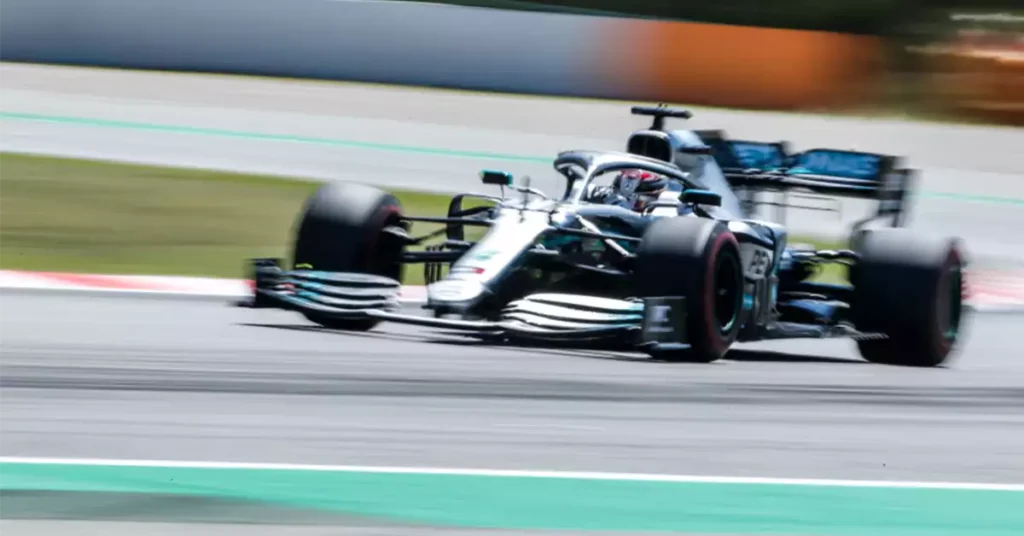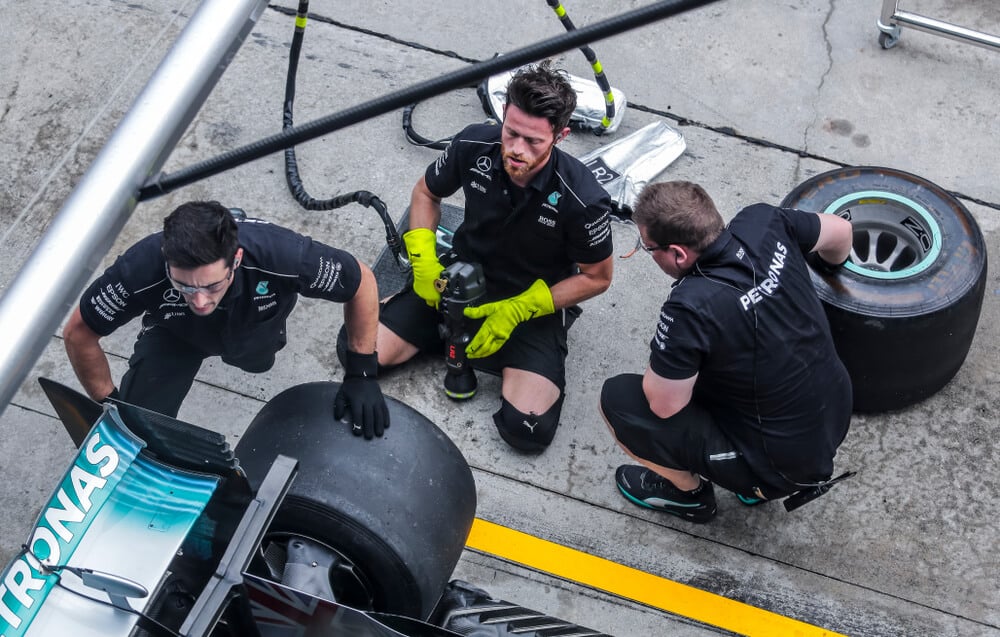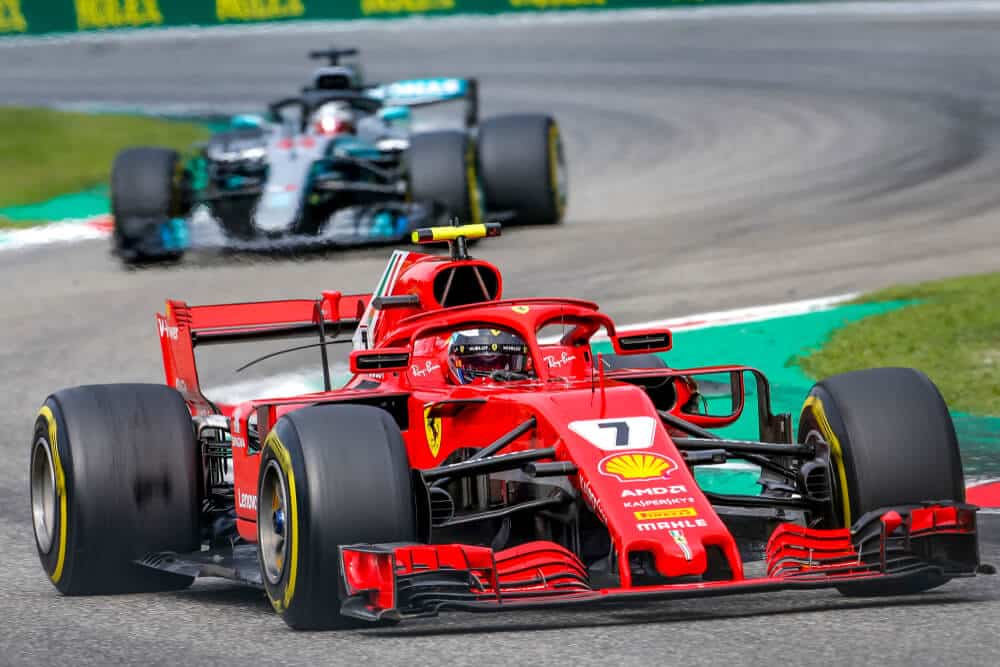Formula 1 teams expend enormous amounts of resources to gain an advantage over their competitors, and the technical race that takes place behind the scenes is perhaps the sport’s defining feature.
To accomplish this, designers and engineers employ a variety of tools to maximize the speed of their vehicles.
The Coanda effect, which has been and continues to be an essential part of an F1 car’s aerodynamics. It has also been responsible for some interesting scandals in the recent past, is one such tool.
So, without further ado, let’s look at the Coanda effect and how teams have used it over the years.
Table of Contents
Watch this video to learn more about the Coanda effect exhaust.
What Is the Coanda Effect?
The Coanda effect, in essence, describes the tendency of a fluid jet to remain attached to a curved surface. It was discovered by Henri Coanda, a Romanian inventor who is sometimes credited with developing and flying the first jet aircraft.
The phenomenon is essential in the production of lift through the use of aerodynamic devices, and is thus also crucial in the generation of downforce for the purposes of F1.
If the Coanda effect did not exist, the amount of downforce that could be generated would be orders of magnitude lower.
If you’ve ever heard of a wing ‘stalling’ on an F1 car, it’s because the Coanda effect has stopped working, which means the air is no longer attached to the wing’s surface. This in turn causes a dramatic loss of downforce, which can be disastrous when driving in excess of 200mph.
That is exactly what happened when Felipe Massa crashed out during the 2015 Chinese Grand Prix. During the second free practice on Friday, the Brazilian lost control of his car while braking for the hairpin, skidding off the track and brushing the barriers as he pirouetted down the escape area.
Although the team was initially confused by what happened, telemetry data revealed that the rear wing was to blame as the air could not reattach after he released DRS.
However, the Coanda effect is used more cleverly than just generating pure downforce, which leads us to the next topic of discussion.
Key takeaways
It describes the tendency of a fluid jet to remain attached to a curved surface.
The phenomenon is essential in the production of lift through the use of aerodynamic devices
It was discovered by Henri Coanda.

The Coanda Effect Exhaust
The FIA made numerous changes in the run-up to the 2012 Formula One season to combat the growing trend of using the exhaust to affect the car’s aerodynamic output.
This followed the ban on double diffusers, which was then augmented in their second year by the use of exhaust blowing solutions, which the FIA also attempted to prohibit.
With blown floors being such a good avenue for increasing car performance, designers were not about to pass up any opportunity.
Using the Coanda effect, F1 teams could use the bodywork of the car to force the exhaust gasses down to the floor and thus create the exhaust-blown diffuser.
Red Bull and McLaren were at the center of it all, with the pair discovering, improving, and utilizing the solution to great effect.
It was also the site of some interesting shenanigans, with Red Bull running a less efficient solution during pre-season testing to keep the design secret and give teams less time to copy it.
How It Was Banned
The FIA allowed the continued use of these Coanda exhausts in 2013 despite the financial burden that teams had to bear in developing them.
And, with the new hybrid rules taking effect in 2014, the ability to blow the diffuser with the exhaust would be rendered obsolete.
As a result, while it was never explicitly prohibited by a targeted rule change, the 2014 regulations were changed to account for it. The days of blown floors were over, as the exhaust had to exit along the car’s centerline going forward.
The Coanda effect is, of course, still used throughout the car; after all, it is an important principle in aerodynamics.
However, as the FIA technical regulations have become more restrictive over the years, and more emphasis has been placed on lowering the cost of competing in the sport, there are fewer opportunities for teams to invest the resources in developing such innovative solutions.
The ideal brake balance that F1 drivers try to find is when all four wheels lock up at the same time.
Frequently asked questions about Coanda Effect
What is Coanda effect?
Does the Coanda effect create lift?
Who discovered the Coanda effect?
Learn more about Formula One
Want to learn more about F1? Then visit our Formula 1 glossary and dictionary.
Article sources
- https://en.wikipedia.org/wiki/Henri_Coand%C4%83
- https://en.wikipedia.org/wiki/Coand%C4%83_effect#Mechanism
- https://oltnews.com/forbidden-the-coanda-effect-exhaust
- https://www.formula1-dictionary.net/coanda_effect.html#:~:text=The%20Coanda%20effect%20is%20used,of%20maximizing%20downforce%20on%20other.




